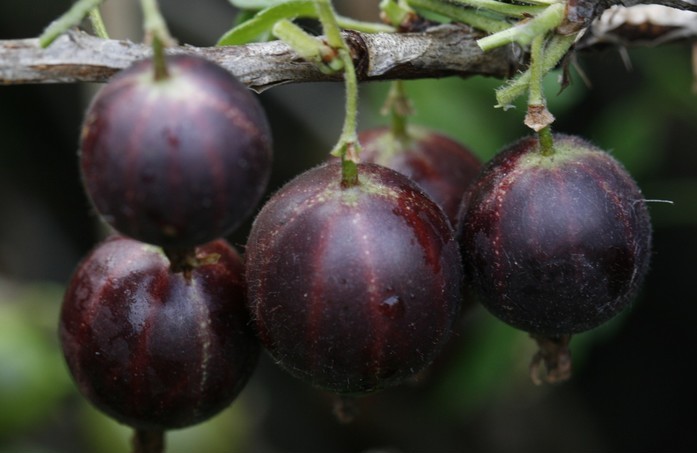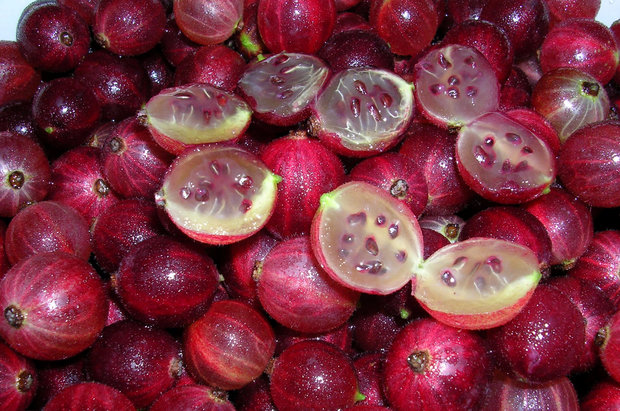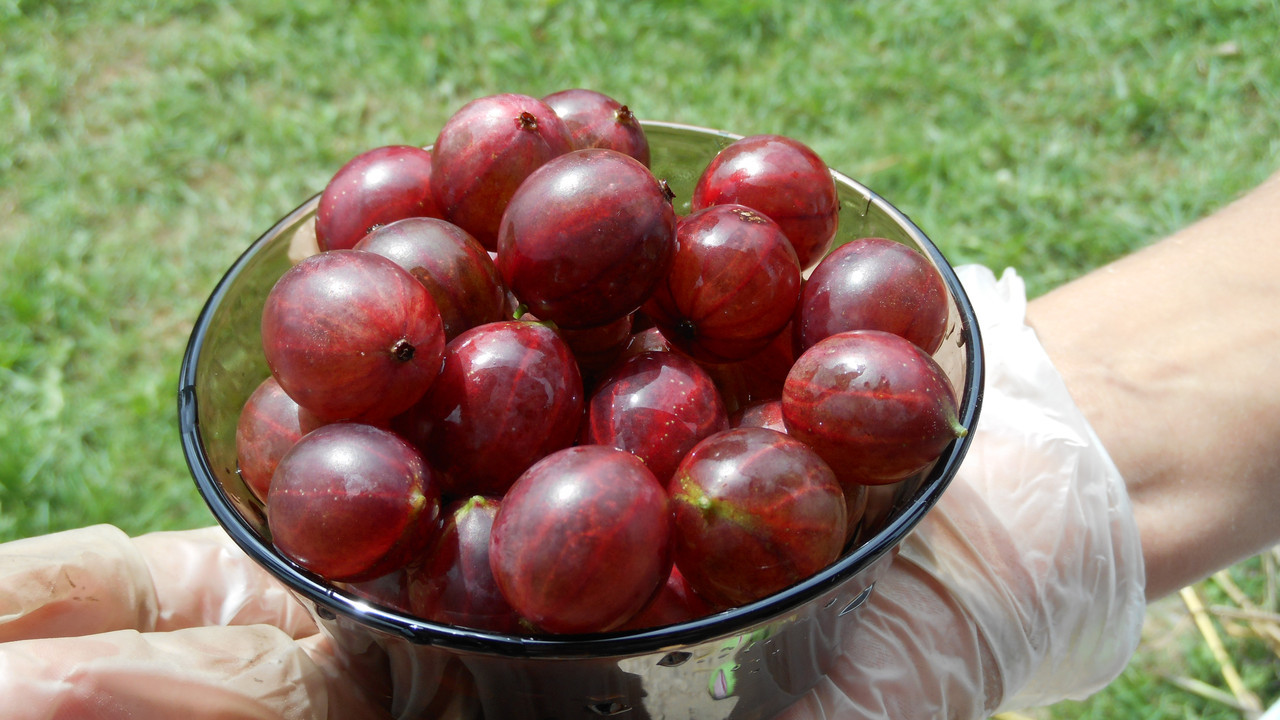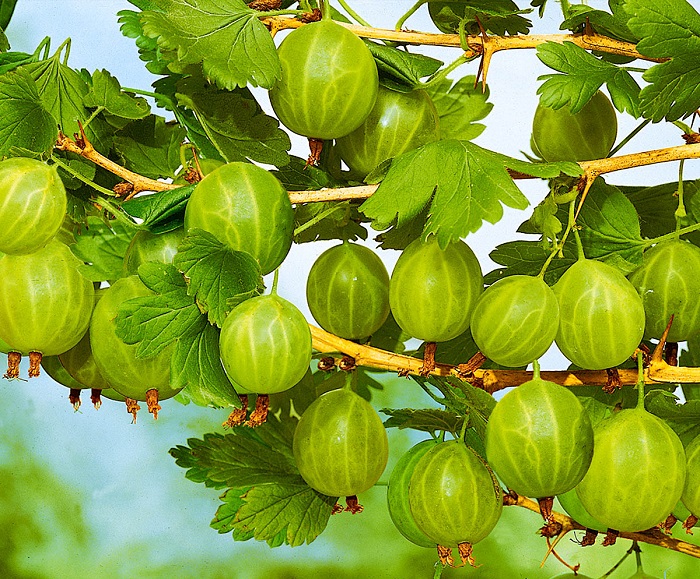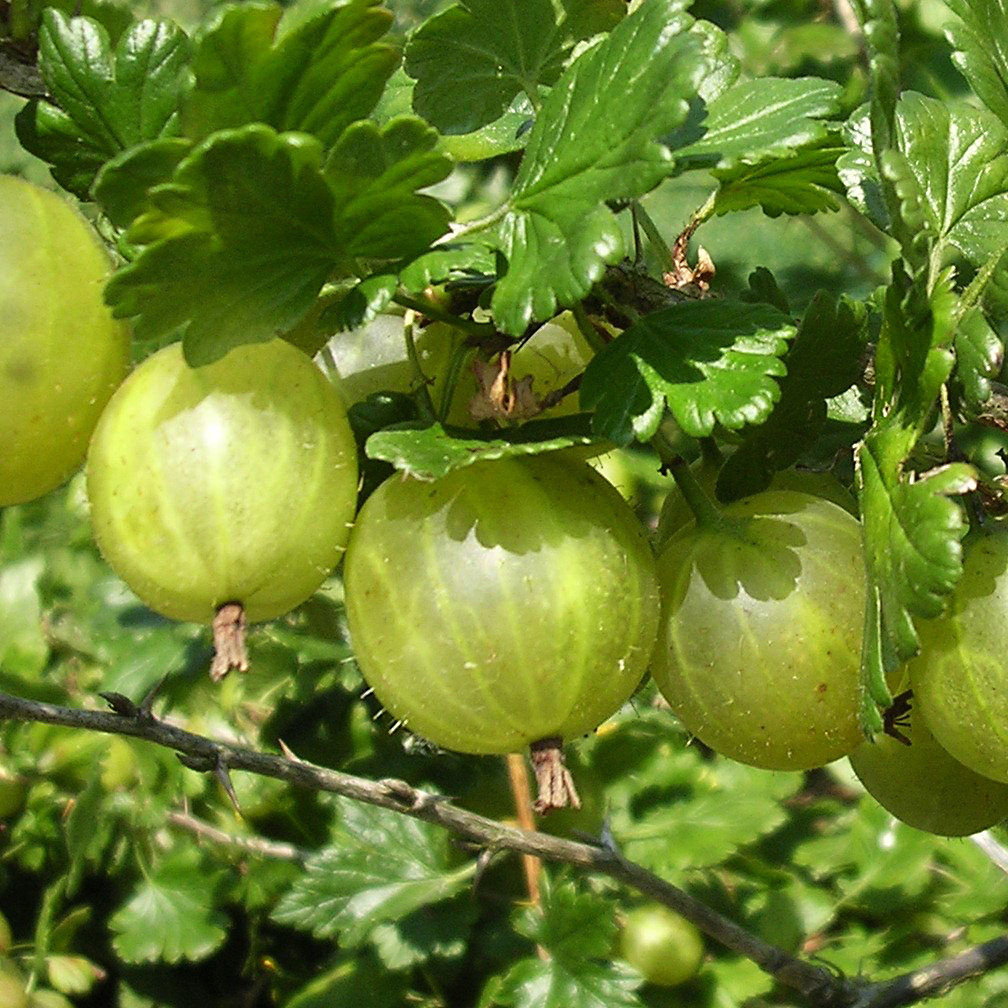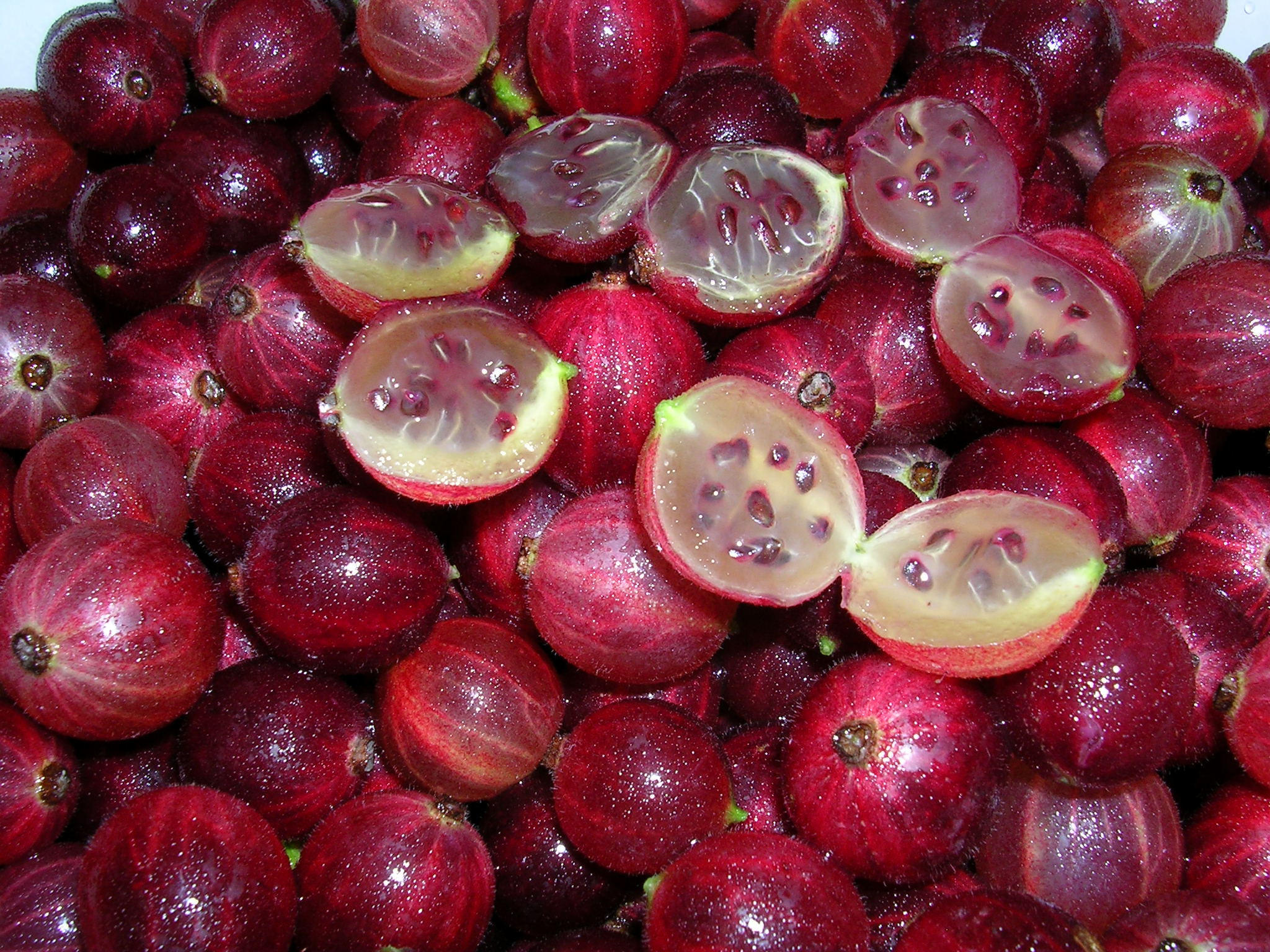Content:
Classic gooseberry, or in Latin Ríbes úva-críspa (rejected / European) - a representative of the Gooseberry family and the Currant genus. The homeland of distribution is the northern regions of Africa and Western Europe.
Next, a detailed description will be presented of what the Consul gooseberry has, the features of growing and care are considered, it is indicated where the described berry is used.
History
Gooseberry was first mentioned in the middle of the 16th century, namely in 1536 in the book "On the Nature of Nature", written by the French botanist Jean Ruel. The second illustrated mention of the plant appeared in Fuchs Leonart's memorable commentary on the description of plants.
The progenitors of the Senator gooseberry cultivar are considered to be two species: the Chelyabinsk green and African, which were crossed by the Russian botanist V.S. Ilyin. After receiving the variety in question, information about it was entered in the 1995 State Register.
Characteristic
Trunk
The gooseberry variety Senator belongs to tall bushes, reaching a height of up to 180 cm. The stem system is dense and has a large number of shoots. Branches of medium thickness have the shape of a straight and / or curved line. Young shoots are colored dark green, in 2 or more one-year-old shoots, the color tends to gray, brown and red.
In the first year of life, at the base of the branches, you can observe thorns of medium length, which, with the development of a gooseberry bush, descend, leaving shoots smooth and pleasant to the touch.
Flower
The inflorescence is present as one-chamber or two. The flower belongs to the bisexual species, therefore, 2 options for pollination are available to it: independent and with the help of another bush.
Sheet
The green mass is egg-shaped and up to 6 cm in size. Each leaf contains up to 5 chambers of a dark green color. The edges of the leaf contain the edge.
Fetus
Dark red 8-gram oval berries with a minimal set of seeds, thin skin and fleshy flesh, sweet and sour taste, containing 4.9% sugar content, which is the highest sweetness rating among tasters.
Agrotechnics
Preparation of planting material
To get a good harvest, it is necessary to prepare the fruit in advance; for this, gardeners recommend doing the following:
- inspect the root system of the seedling after the formation of the roots, the cut should be light or green;
- check the branches for flexibility and lack of dryness;
- for 3-4 hours put the shoot in a solution of 6 liters of water and a growth accelerator in the form of 1 tbsp. potassium humate.
Site preparation
In the process of creating a comfortable "home" for a varietal pet, you must:
- choose a place on the elevated and sunny side of the site, but without drafts;
- choose the right soil - it should consist of sand and black soil, where either one component prevails, or another, with neutral acidity;
- dig a hole 65 * 50 - the bottom of the hole should be 2 thousand cm from the groundwater;
- put fertilizer layers:
- 9 kg of manure, already burned out in advance;
- 2.5 kg of peat;
- 0.3 kg of ash;
- 0.4 kg of limestone.
- stir the potting mix and wait 24 hours until tender.
Disembarkation
In order for a representative of the flora to quickly begin, it is recommended to plant it not only in a certain season of the year: spring or autumn (second decade of 9 months - first decade of 10 months), but also follow the instructions below:
- plant a seedling, slightly tilting it, in a pre-prepared hole;
- sprinkle around with earth;
- make a layer of a pre-prepared soil mixture so that the soil is loose and airy;
- water abundantly;
- put a layer of 15 cm, consisting of dry grass, straw and wood ash - mulch will help protect the plant from cold, pests and provide additional feeding in the form of nitrogen.
Before diving into the open ground, it is necessary to dip the root of the described variety in a mixture of water and earth, then put it in a cloth - these precautions will not harm the health of the plant.
When planting several bushes, it is necessary to leave a distance of 1500 cm between them.In the process of planting, the neck of the plant should go into the ground by 9 cm.
Reproduction
To increase the yield, two breeding methods can be used:
- Cutting - separate a sprout with several buds at an angle of 45 degrees from the top of the mother branch using a pruner, cut off the lower leaves and put in water until the roots appear (for a day). To speed up the process, you can use chemical growth stimulants after water procedures. After the appearance of the root system, plant it in the ground to a depth of 3 cm and water.
- Cutting - put one-year-old branches on the ground, fix them with a plastic or metal arch and sprinkle them with earth, watering abundantly. Separate from the mother bush after the first new shoots appear.
The stiff cuttings are collected in a bunch and planted in the second decade of September to a depth of 20 cm. After planting, they are covered with straw and grass, then several layers of film, protecting from winter cold, and wait for the emergence of seedlings until spring.
Care
In order for the gooseberry to constantly produce a good harvest, it is necessary:
- remove weeds and debris from the place where the bush grows;
- monitor the optimum soil moisture by watering 1 liter of water three times per season: during the formation of ovaries, after receiving berries, before preparing for hibernation;
- to make feeding in the form of ash and mineral complexes;
- loosen the soil to a depth of 15 cm after each wetting;
- if the plant is more than a year old, then remove the old, dried and diseased branches, forming a beautiful bush and leaving up to 15 well-bearing branches;
- if a one-year-old seedling was planted, then leave only healthy and strong branches, removing all the rest;
- so that the bush adapts better when cutting branches, it is advisable to remove 1/3 of the part;
- with a frequency of 2 times a month, but before flowering and after harvesting, spray with chemicals to prevent diseases and protect against pests;
- prepare for the winter season - in case of little snowy winter, put on the ground and cover with polycarbonate; if there is snow, leave it in its original state.
Top dressing
In order for the development of the bush to be quick and fruitful, it is advisable to apply fertilizers according to the following scheme:
- Spring feeding for the accelerated growth of the root system and green mass - the introduction of nitrogen-containing fertilizer, preferably 2 times a month (at the beginning and at the end). In the process of preparing the solution, with the calculation of processing one bush, 12 g of ammonia extract should be diluted per 1 liter of water.
- Summer feeding to feed the plant during the formation of ovaries is the introduction of about 90 g of fluorine, potassium or 350 g of ash into the soil.
- Autumn feeding - making 0.5 buckets of manure or 1.5 buckets of humus, the dosage is indicated for one gooseberry bush.
Harvest
Due to high fruiting (up to 45%), harvesting can be carried out from the second decade of July to the first frost. Up to 4 kg of berries are harvested from one young (up to 3 years old) bush. With the further development of the gooseberry, the total amount of ripe berries reaches 8 kg.
Application
You can use the harvest in the following areas:
- Cooking - raw, frozen or canned.
- Medicine - they help to strengthen the immune system, reduce the risk of stroke, heart attack, help with arrhythmias and high blood pressure, treat the bladder, liver and kidneys.
- Neurology - acts as a sedative.
- Cosmetology - solutions based on the leaves of a representative of the genus currant will improve the complexion and moisturize the skin.
Advantages and disadvantages
In the ranks of the advantages of the Consul gooseberry, the description of the variety is indicated above, it is worth adding:
- high frost resistance - withstands from -25 to -29 ° C;
- lack of thorns;
- tolerates drought well;
- strong immunity;
- variety in application;
- abundant fruiting.
Among the disadvantages it is worth noting:
- low mobility;
- high susceptibility to drafts;
- short period of lying;
- the lack of the ability to grow in bulk;
- satisfactory resistance to pests.
Summing up, it is worth noting that the main characteristics of the gooseberry Senator were considered, the description is presented above, when studying which you can distinguish it from other representatives of the currant genus. In addition to the characteristics, the rules and features of planting and care were considered, which make it possible to get a rich harvest in the process of growing a bush and maintain the quality indicator of fruits for many years.

